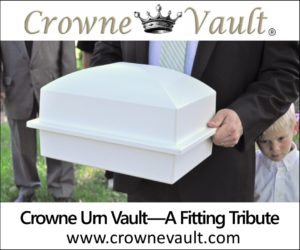Does more money = more services??
 It’s a habit that I just can’t seem to let go of. I’m just business oriented and when I read something I have this habit of taking the information and transforming it into how it may or may not affect the business that I am in. As some of you know, I’m an early investor in a nationally growing food delivery business and just the other day the State of California noted that they will be looking to move some gig-economy based workers – such as Lyft or Uber drivers- from commissioned employers to hourly wage with commissions. I looked at that decision with the idea that it would probably raise expenses for those companies, and others such as Uber Eats, GrubHub, or Door Dash and be good news for our model as we already have employees delivering the meals. i.e. our expenses will stay where they are while competitors are sure to have added expenses under this decision.
It’s a habit that I just can’t seem to let go of. I’m just business oriented and when I read something I have this habit of taking the information and transforming it into how it may or may not affect the business that I am in. As some of you know, I’m an early investor in a nationally growing food delivery business and just the other day the State of California noted that they will be looking to move some gig-economy based workers – such as Lyft or Uber drivers- from commissioned employers to hourly wage with commissions. I looked at that decision with the idea that it would probably raise expenses for those companies, and others such as Uber Eats, GrubHub, or Door Dash and be good news for our model as we already have employees delivering the meals. i.e. our expenses will stay where they are while competitors are sure to have added expenses under this decision.
In the same vein, I read this article from the Minneapolis Tribune this past weekend. It actually dealt with the generosity traits of different age groups and their giving patterns. In essence, the article comes to the conclusion that younger Americans are just as generous as older Americans, but they show their generosity in different ways. For instance, they volunteer or offer emotional support to others. It also says that when they do make financial donations it is often “spontaneous and driven by compassion for a specific cause” . So, in light of that information, you can see why crowd funded funerals have grown in popularity.
The article actually states that “they (younger generations) simply don’t have the money . . . .to donate with pledge cards or consistent giving plans that lock them in.”
So, because I have this bad habit of bringing all information back to my business, I also looked up information on why cremation, and especially direct cremation, has grown so fast over the past decade. Here, is the top five reasons I found. . .in consumer order:
- Cost
- Simplicity
- Flexibility
- Environmental reasons
- Less tradition, More personal
If cost is the number one reason, would it make sense to think if client families had more money, would they spend more on death care services? That is a hypothesis that we have to ask ourselves and if we believe it to be true, what can we do about it?
Can teaching more about financial literacy and information to address debt be a way of doing so? The linked article also gives the statistic that church pastors are 3 1/2 times more likely to talk about giving money to the church than they are to address personal debt. And, the fact of the matter is that those with high debt cannot give to the church – so to many, simply preaching about more giving is a moot point. From my point of view, I think the church is starting to figure this out because at my church they now promote seminars on personal finance, debt, and the like. If the church wants donations from young families, they have reasoned that the young families have to have disposable income to give.
On to funeral service. If cost of services is truly the number one reason people spend less on death care, what can we do to make sure that potential funeral home clients have more money to spend? I am aware of the values of pre-arrangement and how that has helped. However, many who pre-arrange have the available cash in investments to pay for their services – even if they did not have the pre-arrangement set up. What about those — as we are told about all the time — who have less than a month’s savings for emergencies? An untimely death will certainly make them look for low-cost death care services. Can we help them accumulate more so they have more choices than just low-cost?
I did a little research and when I started in funeral service – 1980 – a full service traditional casketed funeral cost about $3000 in my area. Today, that number is probably $10,000 or more.
However, in 1980, every person who passed away was eligible for a $255 Social Security death benefit and Veterans were eligible for another $450-$1130. So, even if it was the VA amount of $450 they received a total of $705 towards their funeral expenses out of the $3000 cost or about 25% of the total – and if the veteran received the $1130 military benefit – the veteran had almost 50% of his full service, traditional funeral paid for. Today, in many cases, while the cost may be $10,000, that government help with the funeral can be zero. And, that is in an environment where we have had a 25% increase in FICA taxes from a total of 6.13% of wages in 1980 to 7.65% today.
Now, I’m a small government guy so I am not one to advocate additional taxes, but one might wonder where were we, as an industry, when all other aspects of Social Security was getting increases and we were just getting cuts. And, the same might be said for our lobbying efforts on saving veterans’ benefits.
It worries me to hear that so many families have less than one month’s income in accessible savings. Even $25 per month in a savings account getting a 3.25% return yield, beginning when hitting the job market at 22, would yield a savings accumulation over $24,000 at age 62 and just the growth with no additional principal would grow that account to almost $50,000 by the age 81 life expectancy.
So, I don’t have easy answers. But the more we can do to spread the gospel of financial literacy to our nation’s younger people will only bode well for our profession in the years to come. I do believe, while we will never get back to the days of high percentage traditional funerals, the more money a family has at their disposal at the time of death will result in more services that they can use to fulfill whatever needs that they may have for memorial celebrations. That will not only help them. . . . it will help us.
[wpforms id=”436″ title=”true” description=”true”]






















